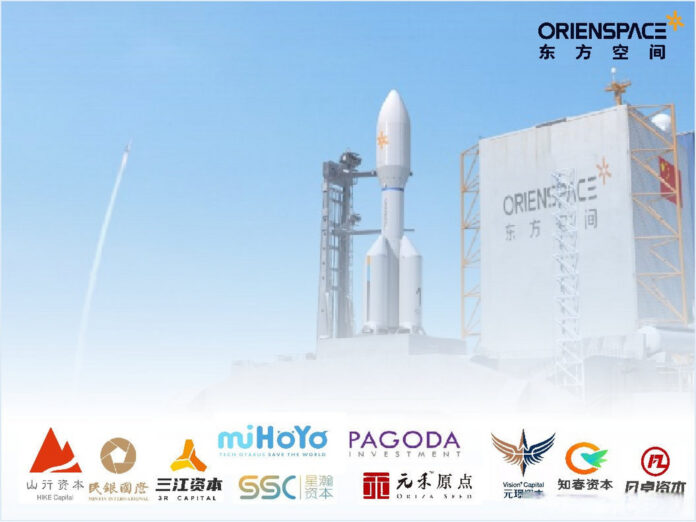
On April 23, the China Space Conference 2023 opened in Hefei, China where a commercial spaceflight unicorn named Orienspace officially unveiled its first rocket Gravity-1, a world-leading solid orbital launch vehicle capable of tripling the capacity of the largest existing solid rocket in China.
Founded in 2020, Orienspace is a space transportation company that designs and manufactures launch vehicles and new space vehicles.
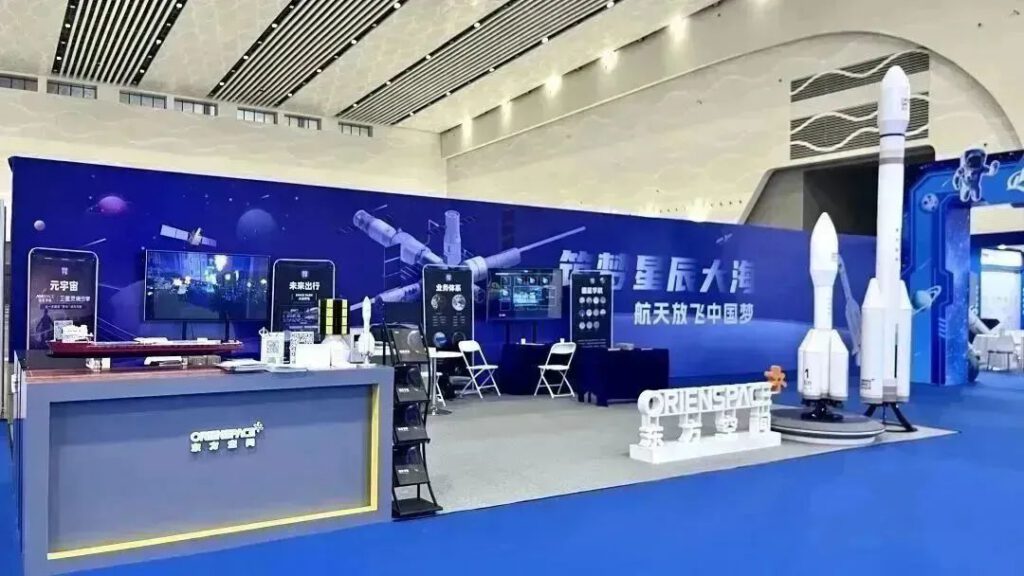
On May 20, 2022, Orienspace (Shandong) Technology Co., Ltd. announced the completion of RMB 400 million in Series A financing. The financing will be used for the development and maiden flight of the Gravity-1 medium launch vehicle, and to accelerate the development of a 100-ton reusable liquid oxygen kerosene rocket engine. Orienspace expects to develop a series of launch vehicles Gravity to create a series of single-use, reusable, and manned flight products, diversified and flight-oriented air and space transportation products, and quickly form a low-cost, large-scale, and convenient launch service capability.
All self-research experiments are successful
On August 26, 2022, tests of the 700N and 50N engines of the final repair attitude control power system used in Gravity-1, which was independently developed by Orienspace, were successful. Through the reaction force generated by the engines, the rocket can realize the pitch, yaw, roll and other attitude control and final velocity correction in some phases of flight. In addition, after the rocket sends all the loads into the predetermined orbit, the final repair engines are turned on as instructed to achieve the de-orbit passivation of the rocket’s upper stage and re-enter the atmosphere to burn up.

On August 31, 2022, the test of the core stage solid motor and servomechanism of the Gravity-1 launch vehicle succeeded. The SR-2500 core stage solid engine with a thrust of 255 tons and nozzle exit diameter of 2.4m is the leading one in China in terms of comprehensive performance. In order to realize the vector control of the engine swing nozzle under large thrust, the servomechanism adopts high-power electromechanical servo, and the maximum power reaches 40kW, which is the largest power among similar products in China.
On September 15, 2022, the joint thermal test of the booster stage solid motor and servo mechanism of the Gravity-1 launch vehicle succeeded. The solid engine of the booster stage is the main power system for the takeoff and boost flight stages of the Gravity-1 launch vehicle, and can also be used as the booster stage of the core stage recoverable Gravity-2.
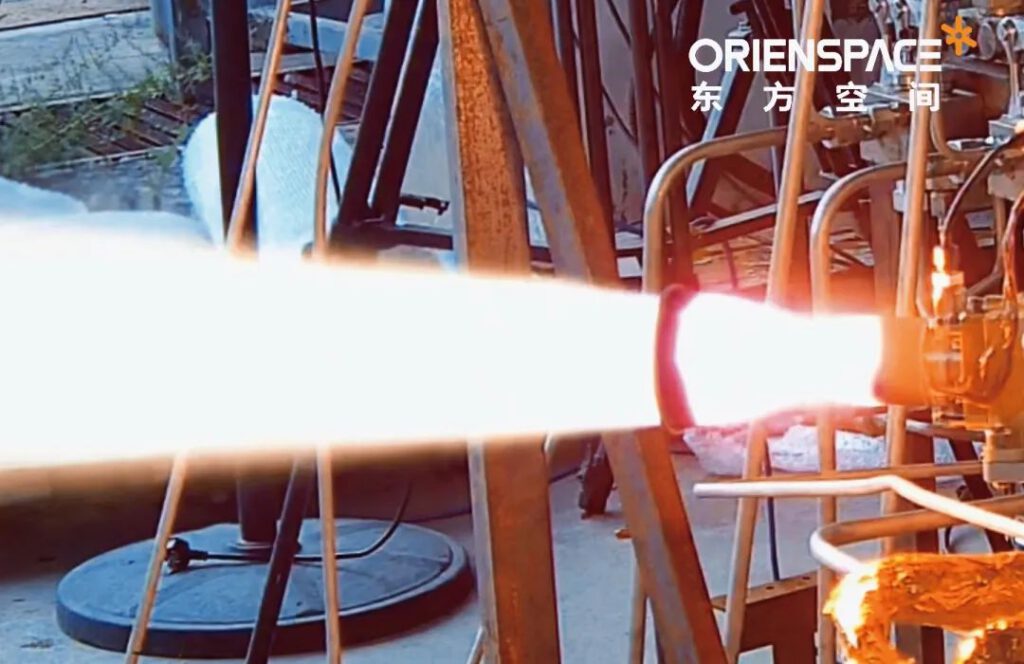
On November 21, the 2022 China Aerospace Conference & Wenchang International Aerospace Forum was held in Haikou, Hainan Province. At the forum, Shi Shengqing, CFO of Orienspace, unveiled the Gravity-1 launch and service plan.
Gravity-1 is an all-solid bundled medium-sized launch vehicle with a capacity of 6.5 tons in near-Earth orbit and 4.2 tons in sun-synchronous orbit, and is fitted with a 4.2-meter diameter fairing to support a multi-star tandem launch mode, which can realize a large-scale space logistics service of 18-24 stars with one arrow.
In terms of service plan, Orienspace will provide 2 rounds of Gravity-1 carpooling service in the fourth quarter of 2023 and the first quarter of 2024, with the ability to carry large innovative payloads, small and medium-sized satellites, and micro research payloads in layers; 10 rounds of whole-arrow launch service will be provided from 2024 to 2025, helping various satellite constellations to form networks efficiently. Orienspace will actively cooperate in commercial launch stations, medium and large launch vehicle R&D, assembly and testing, and construction of supporting facilities, international space transportation services, and space finance.
Safe, economical and flexible sea launch model
Gravity-1 will make its maiden flight at sea in the second half of 2023 at Yantai Haiyang Oriental Spaceport in Shandong Province. Sea launch is an important path to enhance space launch capabilities, and China is the third country in the world to master sea launch technology. To ensure the success of the maiden flight, Eastern Space has conducted tests related to wireless communication equipment at sea at the Eastern Spaceport to verify the reliability of wireless communication and other key technologies for sea launch.
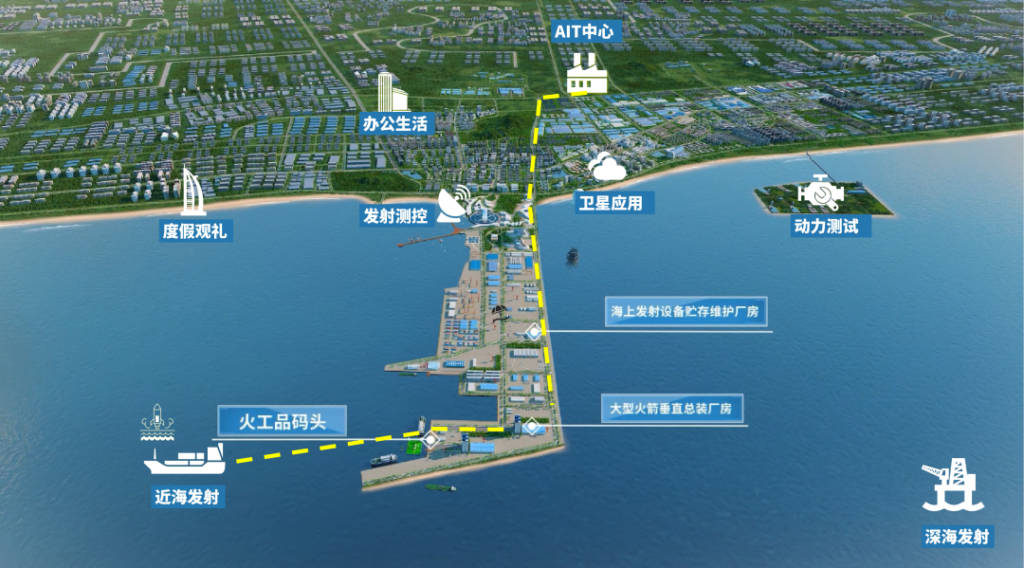
To meet the future demand for normalized, convenient and large-scale commercial launches, Orienspace focuses on building land and sea-compatible launch capabilities to help customers flexibly choose launch orbits and mission points, and flexibly match launch times with high-frequency measurement and launch capabilities to meet the demand for large-scale satellite networking missions.
To build the innovative capability of sea launch, Orienspace has gradually built a R&D team with leading comprehensive strength in the industry. Its co-CEO, Bu Xiangwei, was the overall designer of China’s sea launch rocket and the commander of Zero, and the heads of the overall, structural, flight control, avionics, software, power, launch support and other subsystems in the R&D team have been the chief/vice chief designers of several models, and the team has more than 30 experts with the titles of deputy senior and above.
Orienspace is committed to building a maritime launch infrastructure. Orienspace has built an assembly and integration test center (AIT Center) at Yantai Haiyang Oriental Spaceport, which covers an area of nearly 100 acres and will be able to produce 20 launch vehicles per year after production. Relying on the AIT Center and the related infrastructure of Yantai Haiyang Oriental Spaceport, Orienspace will form a one-stop sea launch service, realizing the whole process of assembly, testing and launch within 5 km from the factory.
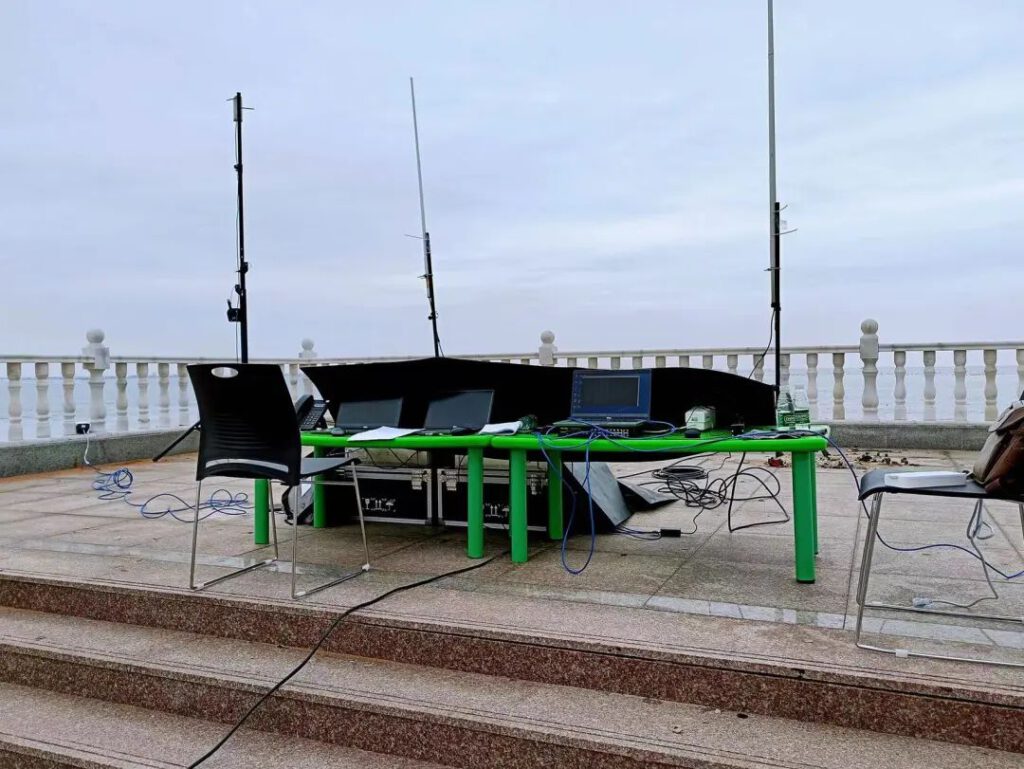
For the first flight at sea in 2023, Orienspace fully combines the experience of aerospace engineering and offshore equipment, and has now completed the design of the launch ship renovation program and started implementation. In the future, Orienspace will also build a dedicated launch platform based on a semi-submersible platform to expand the multi-faceted capabilities of large rocket testing and deep launch to create a first-class commercial space launch system at sea.
Yao Song, co-founder and co-CEO of Orienspace, said, “We will play the cross-border background of our team to gradually replace space-grade products with industrial-grade products, and we will also realize the reuse of rockets through sea recovery to further reduce costs while making tens or even hundreds of launches per year possible, and to promote human space round-trip. “
(Source: Orienspace)



